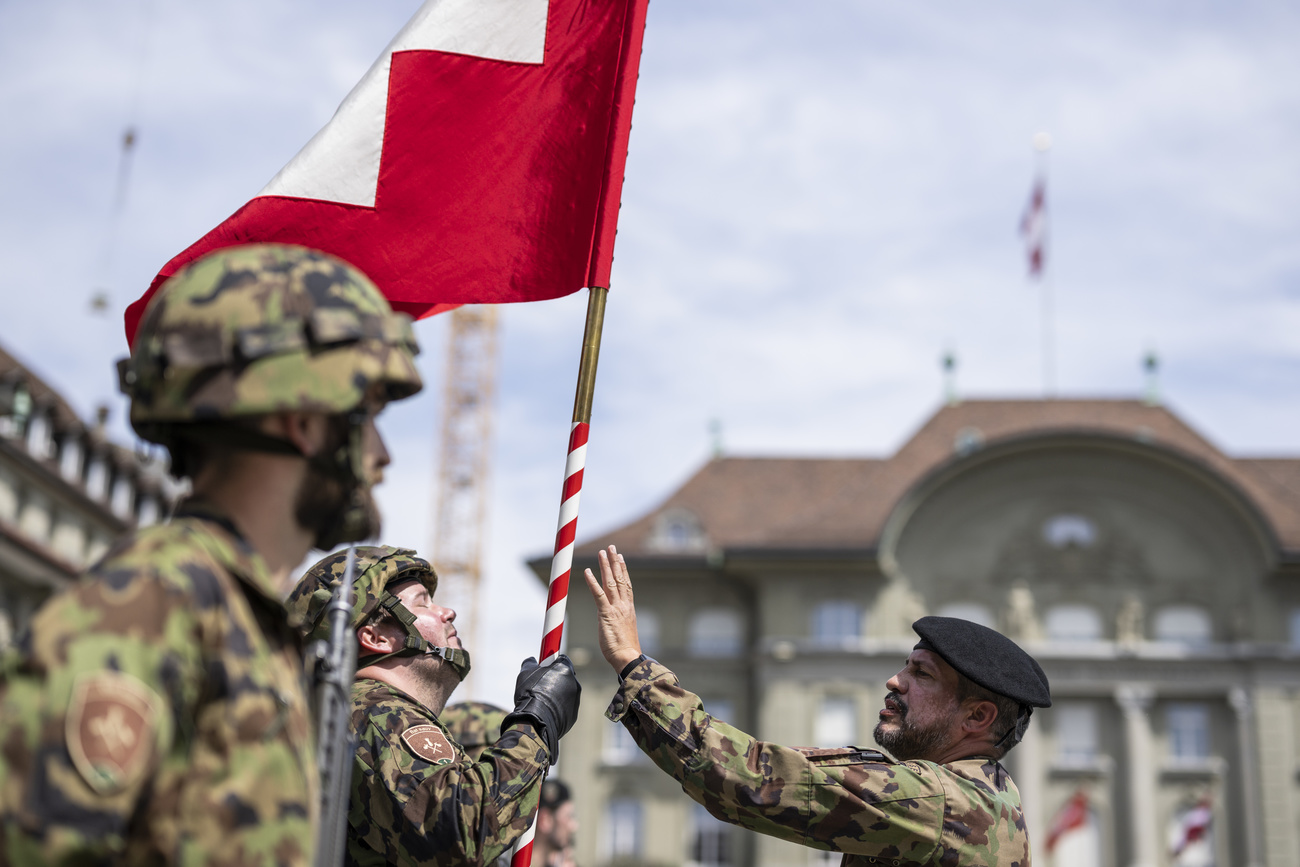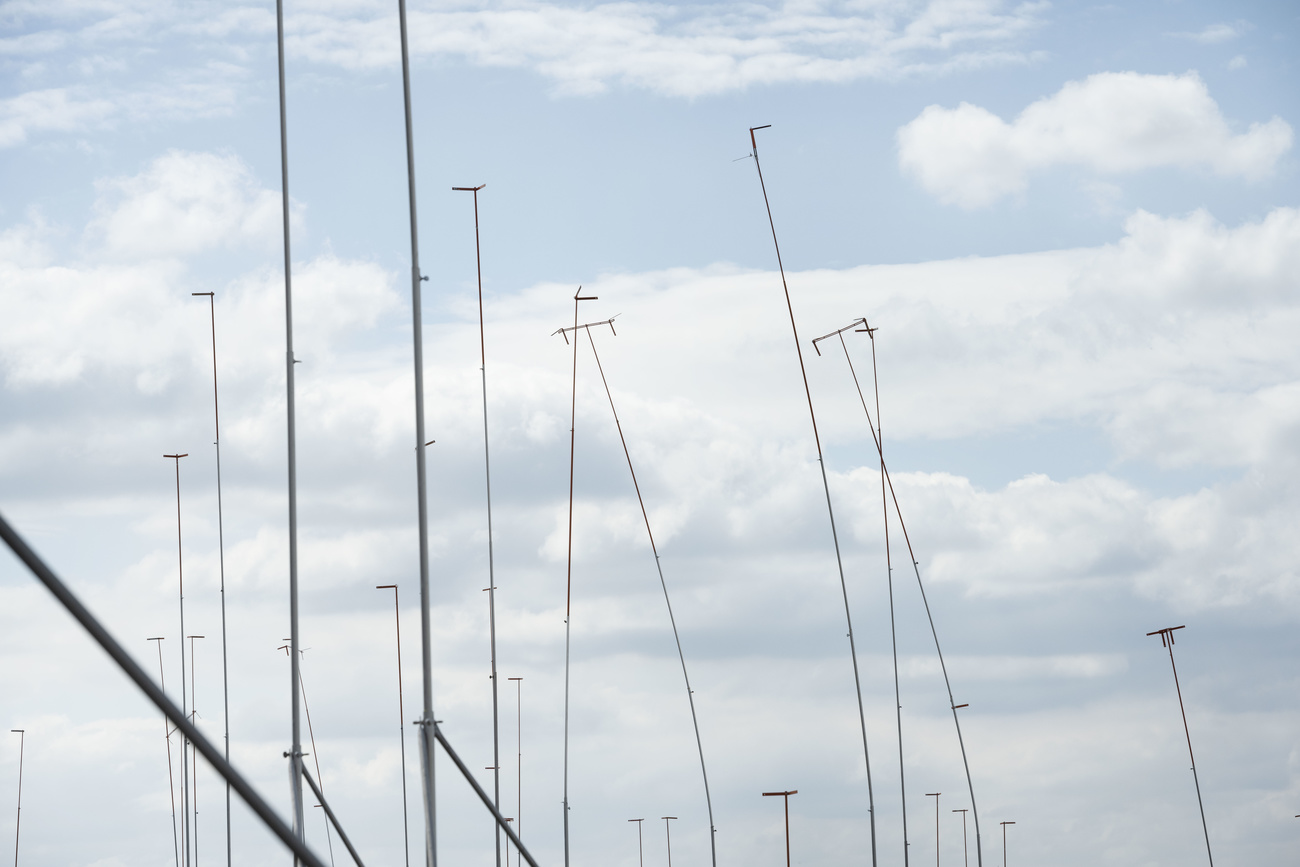Rock climbing for dummies

Hardcore climbers say they are for softies, but "via ferrata" – climbing trails made secure using cables, metal rungs and even ladders – are on the up and up.
Yet despite their appeal to amateurs, not everyone is happy about the steadily growing number of iron paths snaking their way up Switzerland’s slopes and rockfaces.
Via ferrata are not new: the first routes are thought to have been built in Austria in the middle of the 19th century and army troops expanded a network in the Italian Alps during the First World War to haul up supplies and position guns.
Switzerland got in on the act late, developing cabled routes at the beginning of the 1990s.
Their ongoing expansion – the current 40 routes could grow to 100 nationwide – and increasing popularity has spawned what is now seen as a whole new outdoor adventure activity: climbing for novices.
“There’s a clear upward trend – around two to four new projects every year – but it’s a bit exaggerated to talk about a boom,” Jürg Meyer, from the Swiss Alpine Club (SAC), told swissinfo.
Clipped on to a cable running the length of the route via a carabiner, short length of rope and climbing harness, via ferrata are an introduction to the world of the vertical which allow you to enjoy the kind of spectacular settings and exposure normally reserved only for experienced mountaineers and climbers.
Out of control?
But not everyone is wild about the growth of iron paths.
“We want to keep a critical eye on them,” explains Meyer. “Our official position is ‘Yes, but with caution and not everywhere’. We don’t think via ferrata should be built in the high mountains or in remote areas, and especially not on well-known rock faces.”
The Swiss Alpine Club is the main driving force behind the Engelberg Via Ferrata Charter, a non-binding agreement recently concluded between the tourist industry, climbing community, local authorities and environmentalists to promote sustainable routes.
The idea is for trails to be part of a local tourist concept where there is already a certain level of development, explained Meyer.
Jan Gürke, advisor with the environmental agency Mountain Wilderness, is much more critical and refused to sign the charter.
“My general aim is a moratorium; we need a break and to rethink the evolution [of the climbing trails],” he said.
He feels an increase of up to 100 routes is much too high and the growth of via ferrata is “still pretty uncontrolled”.
Mountain Wilderness is especially concerned about budding climbers disturbing wild animals such as falcons, eagles, chamois, ibex and deer.
“My aim is a change towards more quality not quantity. We need via ferrata that are better adapted to the natural surroundings, safer and offering better adventure,” he commented.
Purists v tourists
The growth in via ferrata, especially those built close to existing rock climbing routes, has also led to disputes between traditional climbers and weekend adventurers.
“I think there is a general unhappiness in the rock-climbing scene about the growing number of via ferrata,” said Gürke.
“It’s easier to do these adventure outdoor sports than in the past, as you don’t need to prepare and you can just pay for a guide. Often these people don’t have much experience how to climb and have a different approach to the environment.”
Meyer acknowledges that conflicts do exist “but as usual in Switzerland they are not discussed as openly as in say Britain”, where there are still conflicts between climbers over whether to bolt or not.
“The thing is via ferrata climbing is now part of the official programme of many [Swiss Alpine Club] sections – it’s very much requested,” he notes.
“They’re quite a laugh… not the ‘real thing’, but you can move quickly and get into some pretty mad places very easily, so I’ll not knock them too much,” added experienced British climber Rob Muirhead.
swissinfo, Simon Bradley
A via ferrata – Italian for iron path – is a permanently secured mountain route equipped with steel cables, hand bars, metal rungs, and sometimes ladders or bridges.
The first generation of via ferrata is thought to have been built in the Austrian Alps in the middle of the 19th century. A network of via ferrata was later built in the Italian Dolomite mountains during the First World War to aid the movement of mountain infantry.
Via ferrata are found in a number of European countries, in particular Austria, Italy, Germany, France, Slovenia and Spain. There are also a few routes in the United States and Canada.
Via ferrata are a relatively recent phenomenon in Switzerland, dating from the early 1990s. From 20 routes in 1999, there are now 40 countrywide and this figure may well rise to 100.
According to Eugen Hüsler, a via ferrata expert, in western Switzerland there are more ‘French-style’ via ferrata, which are usually quite difficult and more action-oriented with lots of ladders, footbridges, tyrolean traverses, flying foxes and other installations. In eastern regions you find more traditional alpine via ferrata with fewer installations but which go up higher.
To climb a via ferrata, you need a helmet to protect against falling rock, and a harness, which you clip on to the metal cable.

In compliance with the JTI standards
More: SWI swissinfo.ch certified by the Journalism Trust Initiative











You can find an overview of ongoing debates with our journalists here . Please join us!
If you want to start a conversation about a topic raised in this article or want to report factual errors, email us at english@swissinfo.ch.